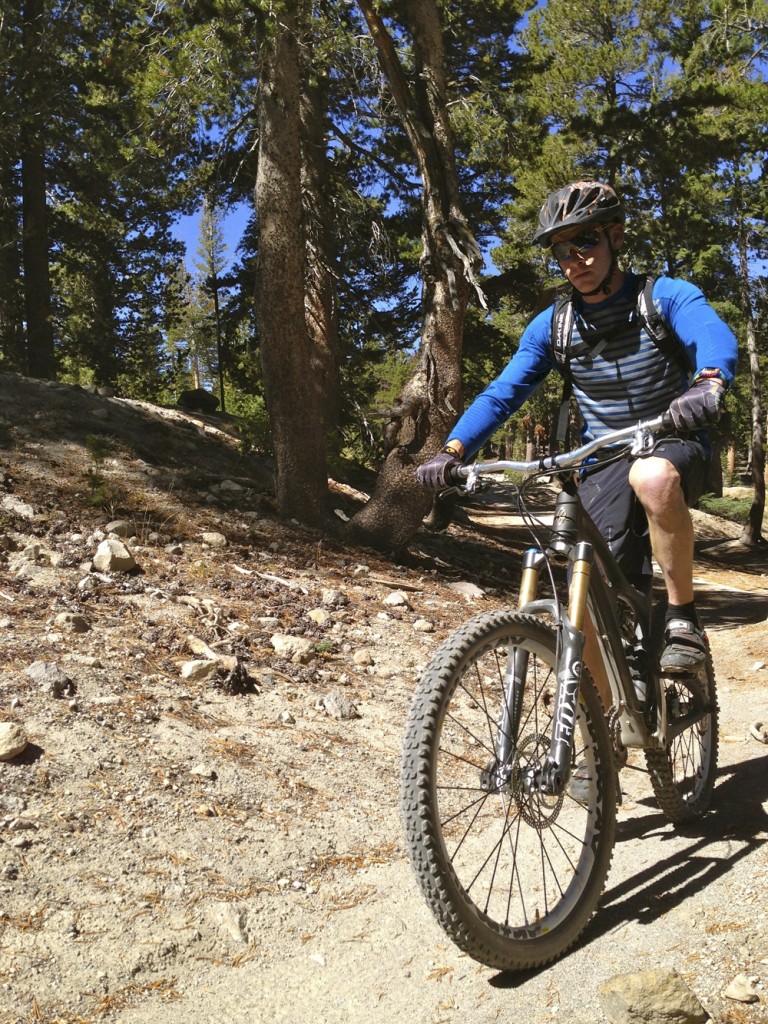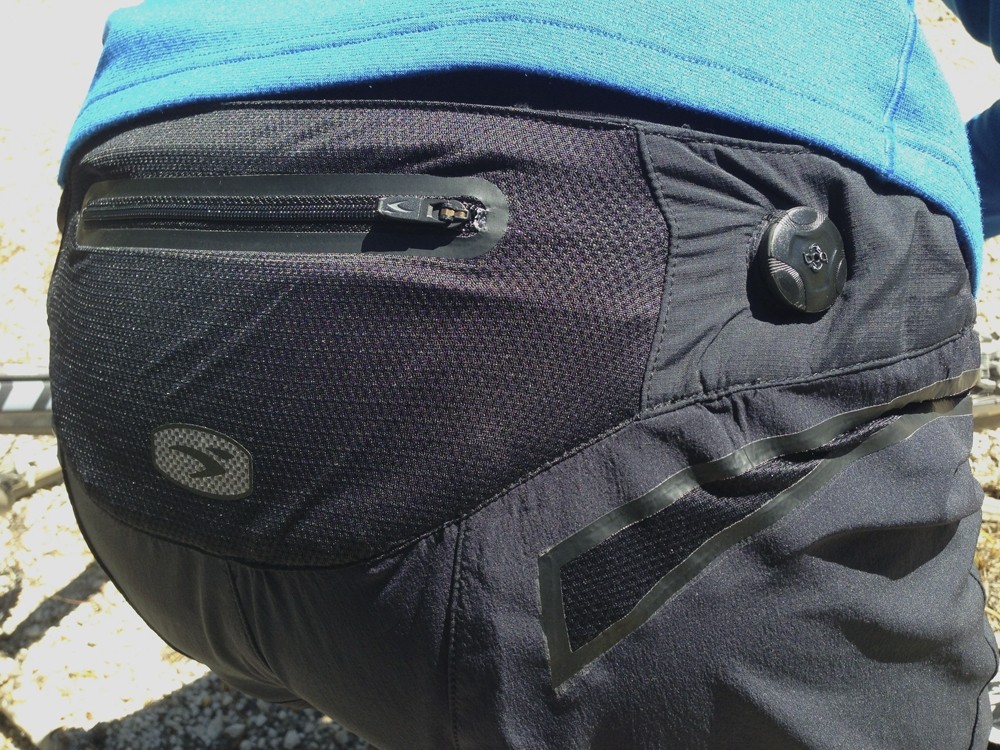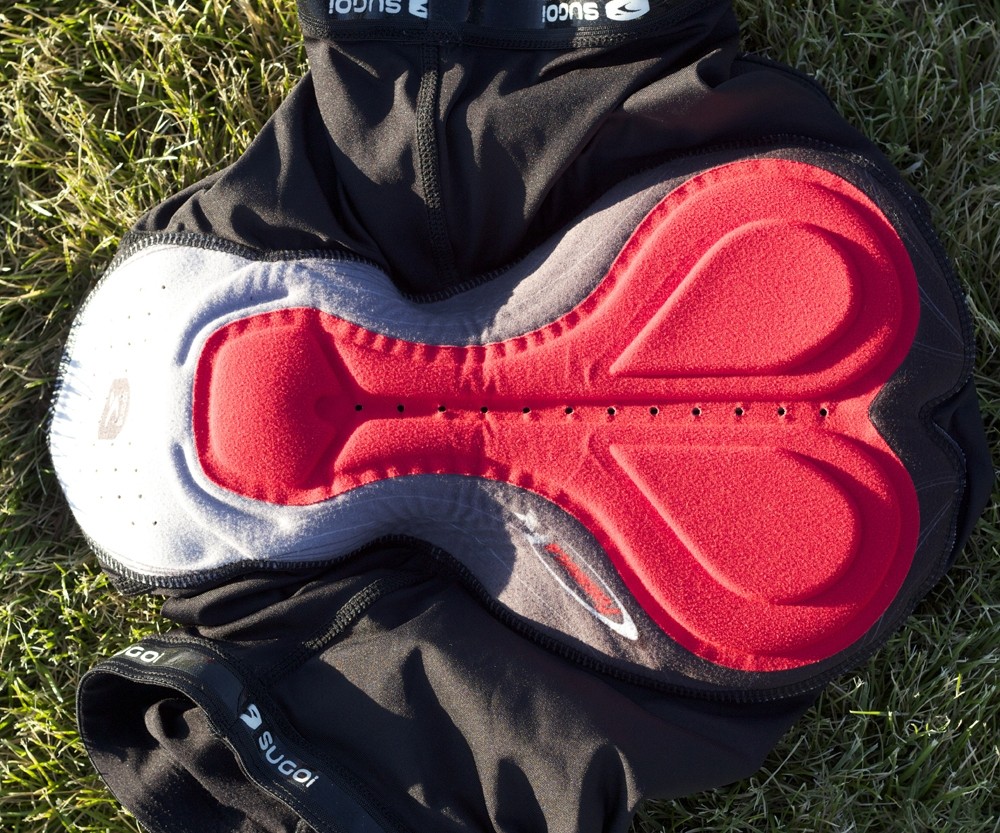Keep reading to hear what we thought of the now discontinued RSX. It appears that most retailers have sold out of the RSX that we've tested but a bib liner version called the RSX suspension is still being produced with the whopping price tag of $200.
The RSX Short by Sugoi was the most anticipated short by our testers, mostly because the enormous price tag led us to believe it would be awesome. At $180, this is the most expensive short we tested, which is $55 more expensive than the next most expensive short. We figured that a short this expensive would have some mind blowing features that would set itself way above all the competition. Sadly, this was not the case. The RSX scored poorly in most of our categories except for comfort, where it took the top score. The RSX earns such a high score for comfort because of the Formula FX chamois which is part of its inner short. This foam chamois is the thickest, most dense chamois in our review and is worthy of high end road shorts. Overall, we recommend taking a look at one of the other shorts in our review, especially some of our award winners like the Pearl Izumi Elevate, Dakine Boundary, or Zoic Ether, before you drop huge money on this short.Sugoi RSX Review
Our Verdict
Our Analysis and Test Results
This short looks awesome on paper and was the most anticipated in the test. Unfortunately, it failed to impress on the bike. The Sugoi RSX is a lightweight short that more closely resembles a running short than a trail riding short. The liner short is one of the best chamois we tested and the short's best quality. The waist uses a unique Boa system to adjust the fit, which proved unreliable.
Performance Comparison
Style
Sugoi is better known in the running and road bike worlds than on the mountain bike scene. This short resembles a running short much more than something built for shredding dirt. The most eye catching aspect of the RSX is the bonded mesh panels on the thighs and hips. These panels are bright blue on the light grey short and really pop. The black version, however has black panels that hardly stand out if you don't want to draw attention.
Durability
The RSX outer short is constructed from RS Flex, which is a very lightweight stretch material. We were a bit skeptical that this fabric would hold up to mountain biking, but it faired well in our test. Unfortunately the bonded mesh panels which make up the vents began to peel away from the RS Flex fabric after a few rides and washes.
Features
The feature that really stands out on the RSX is the Boa L5 dial closure system, which adjusts the waist of the short. There are no belt loops or velcro tabs on the RSX, instead it uses a Boa dials on either side of the back of the short to tweak the fit. This is the only short we tested to have Boa dials, and we were excited to use them since they are found on so many high end cycling shoes. While the Boas would wind the shorts plenty tight, we found that they would also pop open and release tension while riding. This was sometimes due to our jersey pulling on them, and sometimes it seemed at random.
Comfort
Comfort is the one area where we scored the RSX very highly, completely due to the quality of the Formula FX Chamois used in the liner short. This chamois is constructed from the densest foam of any of the shorts we evaluated, which has four different thicknesses arranged across the chamois to create body-mapped areas of comfort.
Protection
The RSX did not instill confidence in us when riding technical terrain where we were likely to go down in the dirt. This is due to a combination of the lightweight material, short inseam, and wide leg openings. The legs of this short are likely to ride up and not offer much protection in a crash. For this reason we think the RSX is much more suited to light cross country riding where you are very unlikely to come off the bike. For a short that fits better with kneepads, check out our Editors' Choice winner, the Troy Lee Ruckus.
Fit/Pedal Friendliness
Sugoi makes a lot of running shorts, and this short fits like a running short. It does not have a ergonomic cut tailored to riding. Rather, is has a somewhat square cut with baggy legs. The short never felt restrictive due to the stretch fabric and roomy fit, however it did bunch up slightly in the front when seated in the saddle.
The lightweight four-way stretch RS Flex fabric that the short is made from is both stretchy and breathable, and creates a great short for pedaling. The vents and airy cut of the short also make this pair ideal for riding in hot climates, though you may want to go with the grey color rather than the black on black that we tested if this is your goal.
Oddly Sugoi uses a non-stretch rip-stop inseam gusset. This is an area where many other shorts use stretch material to add stretch, and this short is the opposite. However, because the rest of the short has so much stretch, we didn't feel limited in our range of motion. The rip-stop may be slightly less likely to hang up on the saddle when descending, but we found that the cut of the short has more to do with that than the fabric used. In this regard, the RSX cut was decent but not as articulated as the Dakine Boundary.
Best Application
This short is best during cross-country riding, especially in warm weather.
Value
The RSX is the most expensive short in the review by a long shot, and we think the RSX isn't worth the extra coin. The only super high-end feature of the RSX is the Formula FX chamois pad. If this is your only criteria for finding a short, we recommend you look at some high end road bibs which will have excellent chamois and also be more efficient on the bike. If you are looking for the best mountain bike short with a great chamois attached to an awesome liner short, check out the Troy Lee Ruckus. For the most bang for your buck consider the Zoic Ether which retails for less than half the price of the RSX.
Conclusion
The RSX has the best chamois and is one of the most efficient shorts for pedaling, but the Boa waist adjustment is gimmicky and not worth the cost that it adds to this short. The cut is not especially ergonomic and it offers little protection from full-contact riding. If comfort and efficiency are the only things you are looking for in a short, then we think you should consider a spandex bib, which by their nature will always out do baggies when it comes to efficiency. We think that this short is way overpriced for what you get, and doesn't offer any advantage over a high end bib.
Other Versions
The RSX Suspension Short is similar to the RSX that we tested but uses a bib style liner.
Sugoi is better known for running shorts and road shorts but they do make a few other mountain baggies including the RPM-X and EVO-X.






